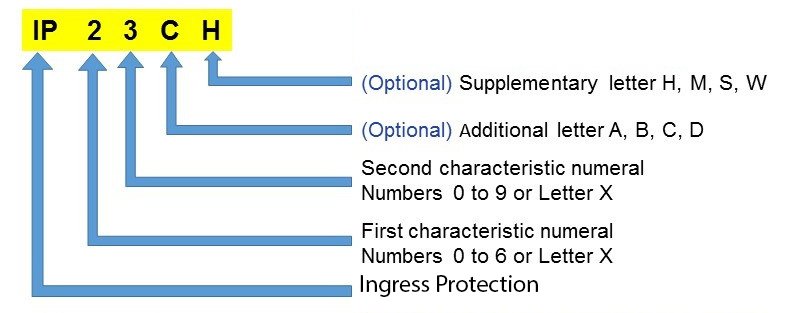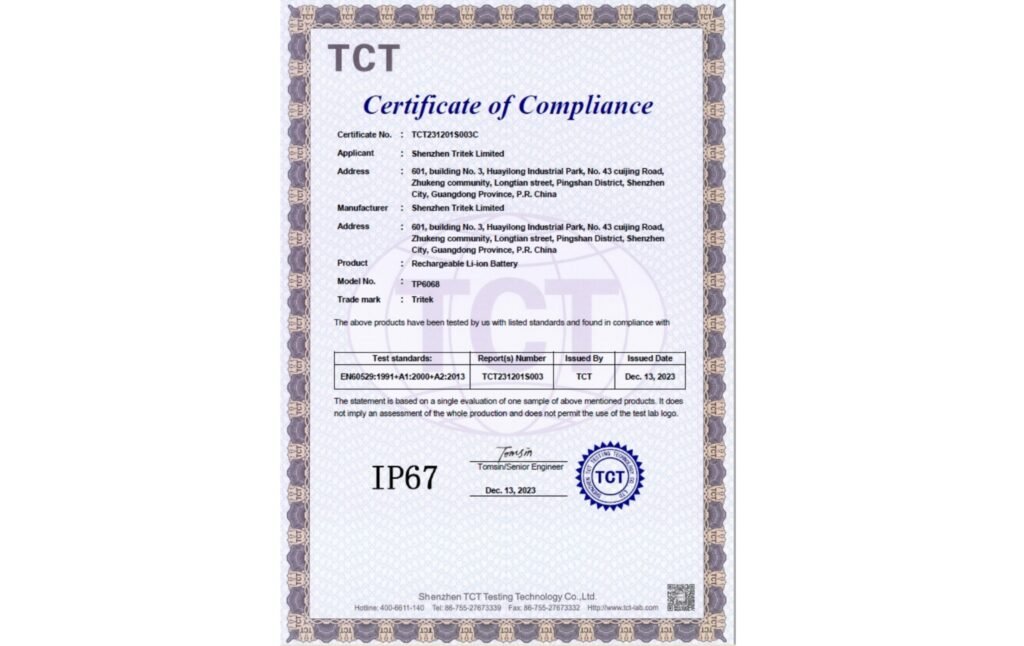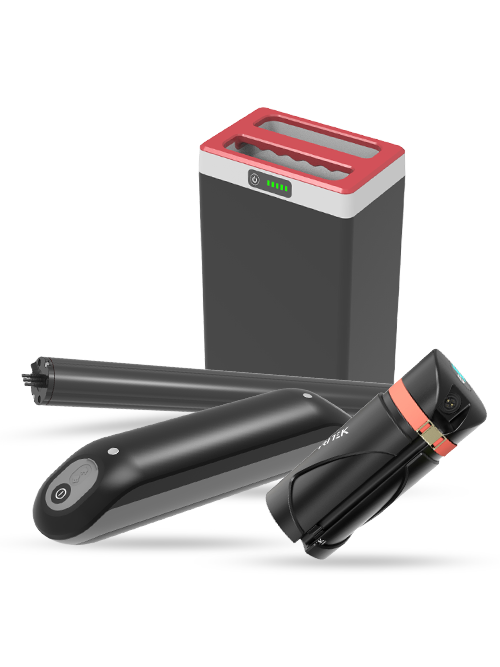Are you searching for devices built to withstand the harshest of environments? Enter the world of Ingress Protection (IP) ratings. Among these, one stands tall: IP67.
Imagine a device that effortlessly repels dust, shrugs off water like it’s an afterthought, and remains unscathed amidst the most challenging conditions in industrial and commercial settings.
That’s where IP67 comes into play—a code that defines the fortress-like defense against solid and liquid intrusions in devices across various sectors, from pharmaceutical and medical applications to demanding industrial environments.
These ratings, designated by a combination of letters “IP” followed by two digits, aren’t just technical jargon. They are the keys to ensuring your devices maintain high connectivity, consistent functionality, and reliability, even in the face of daunting elements.
Understanding IP Ratings
International Protection Marking, also known as Ingress Protection Rating or IP code, established by the International Electrotechnical Commission (IEC 60529), serves as the beacon guiding us through the resilience of devices against the elements. At its core, the IP code—specifically, the revered IP67—defines a device’s robustness against two adversaries: solid foreign objects and liquid ingress.

Let’s delve into the anatomy of IP ratings:
First Digit (Solid Intrusion)
This numerical digit, ranging from 0 to 6, is the fortress wall guarding against solid intruders. An IP rating starting with a higher digit signifies an increased ability to fend off dust, dirt, and other airborne foreign materials that could wreak havoc on electrical enclosures and sensitive components.
- Level 0: No protection; equivalent to no defense against foreign object entry, directly exposed.
- Level 1: Protects against objects larger than 50mm; prevents any large surface body contact but doesn’t block intentional contact with a specific part of the body, like palm or back of the hand.
- Level 2: Prevents objects larger than 12.5mm; capable of blocking objects of finger size or similar.
- Level 3: Stops objects larger than 2.5mm; capable of preventing tools like screwdrivers from entering.
- Level 4: Blocks objects larger than 1mm; isolates most wires from entering and small pointed tools or insects (such as ants).
- Level 5: Dust-proof; doesn’t completely prevent dust entry but requires a substantial amount to affect device operation and completely prevents contact.
- Level 6: Completely dust-proof; prevents dust entry entirely and completely stops contact.
Second Digit (Liquid Intrusion)
The second digit of the IP code, varying from 0 to 9K, delineates a device’s resistance to liquid penetration. As the digits ascend, so does the device’s capability to withstand liquid encounters—ranging from light water sprays to even momentary water immersion.
- Level 0: No Protection
- No specific testing criteria or targets were defined.
- Level 1: Dripping Water
- Test Objective: Vertical dripping water should have no adverse effects.
- Test Details:
- Duration: 10 minutes.
- Water Volume: 1mm rainfall per minute.
- Level 2: Tilted Dripping Water (15°)
- Test Objective: Water droplets at a 15° tilt should have no adverse effects under an umbrella-like protection.
- Test Details:
- Duration: 10 minutes.
- Water Volume: 3mm rainfall per minute.
- Level 3: Spraying Water
- Test Objective: Pressurized spray above the device (within a 60-degree vertical line) should not cause any infiltration.
- Test Method: Using a nozzle.
- Test Details:
- Duration: 10 minutes.
- Water Volume: 10 liters per minute.
- Water Pressure: 50–150kPa.
- Level 4: Splashing Water
- Test Objective: Water splashing from any angle onto the device should not have adverse effects.
- Test Method: Using a nozzle.
- Test Details:
- Duration: 10 minutes.
- Water Volume: 10 liters per minute.
- Water Pressure: 50–150kPa.
- Level 5: Low-Pressure Water Jets
- Test Objective: A 6.3mm nozzle water jet from any angle onto the device should have no adverse effects.
- Test Details:
- Duration: At least 3 minutes.
- Water Volume: 12.5 liters per minute.
- Water Pressure: 30kPa at a distance of 3m.
- Level 6: High-Pressure Water Jets
- Test Objective: A high-pressure water jet from a 12.5mm nozzle at any angle onto the device should have no adverse effects.
- Test Details:
- Duration: At least 3 minutes.
- Water Volume: 100 liters per minute.
- Water Pressure: 100kPa at a distance of 3m.
- Level 7: Immersion up to 1m
- Test Objective: The device should remain undamaged when submerged up to 1m under specific conditions.
- Test Details:
- Duration: 30 minutes.
- If the height of the equipment is lower than 850mm, the lowest point of the equipment shell should be submerged below the water surface by 1000mm.If the height of the equipment is higher than 850mm, the highest point of the equipment shell should be submerged 150mm below the water surface.
- Level 8: Immersion Beyond 1m
- Test Objective: Device suitable for prolonged immersion beyond 1m under manufacturer-specified conditions. Usually indicates a sealed device.
- Test Details:
- Continuous immersion for at least 1 hour. Depth specified by the manufacturer.
- Level 9K: High-Temperature High-Pressure Water Jets
- Test Objective: The device can withstand close proximity, high-temperature high-pressure water jet impact under manufacturer-specified conditions.
- Test Details:
- Duration: 2 minutes.
- The test involves an 80°C water jet at 80-100BAR pressure. Distance, angles, and water volume are specified by the standard.
Understanding these digits, especially the potency of IP67, is akin to unlocking the classified protection levels your devices need in challenging industrial environments and beyond. It’s the assurance of durability against wind-blown dust, vertically falling drops, and even the rigors of automated car wash counters or irrigation systems.
Significance of IP67
Among the array of Ingress Protection (IP) ratings, one reigns supreme: IP67. Its significance lies in its unyielding defense mechanisms against the dual adversaries—dust and water.

Robust Dust Ingress Protection Ability:
IP67 signifies more than just dust resistance; it embodies a stronghold against the relentless assault of wind-blown dust and other airborne solid materials. Devices equipped with an IP67 rating, such as industrial computers or compact-sized rugged devices, possess the resilience to maintain functions even in environments where other devices falter.
Water Resistance – Immersion up to One Meter:
Moreover, the prowess of IP67 extends beyond dust. It offers a shield against water ingress, allowing devices to submerge up to one meter for 30 minutes without compromising functionality. This level of protection finds its relevance in a multitude of industries, from agricultural technologies braving irrigation systems to pharmaceutical applications where consistent cleaning and resistance to cleaning chemicals are pivotal.
The importance of IP67 lies not just in its numbers but in the guarantee it provides—an assurance that your devices will maintain high connectivity, withstand the challenges posed by water splashes or even light water jet sprays, and continue operating seamlessly.
Application in Battery Packs (Tritek’s IP67 Rating)
Tritek’s battery packs stand as a testament to innovation and reliability, particularly in the realms of challenging industrial environments and agricultural technologies.
Crafted meticulously to navigate the toughest terrains, Tritek’s battery packs encapsulate the essence of resilience and robustness. Their design, fortified by the esteemed IP67 rating, ensures functionality remains unwavering in the face of adversities like dust ingress, water exposure, and a myriad of environmental challenges.
In challenging industrial settings, where wind-blown dust and other airborne foreign materials are omnipresent threats to electrical components, Tritek’s IP67-rated battery packs reign supreme. Their ability to resist dust intrusion keeps crucial electrical enclosures safeguarded, ensuring consistent operations even amidst the swirling dust storms of industrial environments.
Moreover, in agricultural technologies where irrigation systems demand devices to endure constant exposure to water, Tritek’s IP67-rated battery packs showcase their resilience. The capability to withstand immersion up to one meter for 30 minutes aligns seamlessly with the demands of agricultural applications, promising uninterrupted functionality even in the face of occasional submersion.
The significance of Tritek’s IP67-rated battery packs lies not just in their robust build but in their ability to elevate performance and reliability in the most demanding of environments, ensuring consistent power delivery and steadfast operations where other devices might falter.
Conclusion
In summary, the landscape of Ingress Protection (IP) ratings unveils a realm of fortification for devices against the perils of solid and liquid intrusions. These ratings, denoted by combinations like IP67, are more than just alphanumeric sequences; they are the lifelines of reliability across diverse industries.
The significance of IP67, in particular, resonates deeply in the world of technology and industry. Its ability to fortify devices against dust ingress, even in environments prone to wind-blown dust and other airborne solid materials, sets a benchmark for reliability in challenging industrial settings.
Moreover, IP67’s prowess in conferring water resistance, allowing devices to endure immersion up to one meter for 30 minutes, finds relevance in sectors like agricultural technologies and pharmaceutical applications, where resilience against water exposure and consistent functionality amid cleaning chemicals are paramount.
As we conclude this exploration of IP ratings, it’s evident that IP67 stands tall as a symbol of guaranteed protection and unwavering performance in demanding environments. Tritek’s IP67-rated battery packs epitomize this resilience, offering a solution that’s more than just a power source—it’s a promise of continuity and reliability.
For those seeking devices that can navigate the rigors of industrial and technological landscapes with unwavering efficiency, Tritek’s IP67-rated battery packs stand as an exemplary choice. Explore the world of relentless performance and reliability; explore Tritek.



